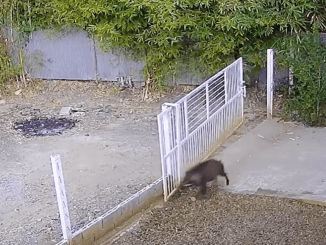Gorillas, one of the largest and most closely related primates to humans, impress us not only with their size and strength but also with their rich emotional lives and behaviors. Recent research has expanded our understanding of gorilla emotions, revealing a complex psychological world previously unimagined.

Exploring Gorilla Emotions

Gorillas have the capacity to experience and express a range of emotions similar to humans, including joy, sadness, anger, and fear. These emotions are manifested not only through behavior but also through body language and facial expressions.
- Joy and Social Bonds: Gorillas can express joy through activities such as play and social interaction. Moments of joy are often observed within gorilla groups as they communicate through gestures, sounds, and games. For instance, playful interactions between gorilla infants and adults often indicate a deep connection and friendship among them.
- Sadness and Loss: When a companion is lost or when faced with changes in their environment, gorillas may exhibit signs of sadness. Studies have noted that gorillas can go through a mourning process and display feelings of loss through behaviors like reduced activity, searching for, or calling other members of their group.
- Anger and Conflict: Anger in gorillas is often expressed through territorial defense or struggles for dominance within the group. These bouts of anger can lead to conflicts and disputes among individuals but are also a crucial part of maintaining social structure and hierarchy within the group.
- Fear and Reaction: Gorillas display clear reactions when confronted with danger or threats. They may show fear through behaviors like shrinking their bodies, emitting warning sounds, or moving away from the threat. This response is a vital survival mechanism that helps protect themselves and group members.
Scientific Understanding of Gorilla Emotions
Research on gorilla emotions typically relies on observations in both natural habitats and captive environments. These studies not only provide insight into how gorillas express emotions but also enhance our understanding of how other primates perceive and respond to their surroundings.
Scientists use tools such as behavioral observation, sound analysis, and brain studies to gain a deeper understanding of gorilla emotions. These studies reveal that gorillas possess brain structures similar to those of humans, allowing them to perceive and express emotions in a nuanced and diverse manner.
The Significance of Understanding Gorilla Emotions

Understanding gorilla emotions not only helps us appreciate the richness of the animal world but also impacts how we interact with them in captivity and conservation settings. Protecting gorilla habitats and ensuring they have conditions close to their natural environments contribute to their overall well-being, both physically and emotionally.
Conclusion
Gorillas are not just powerful and impressive creatures but also beings with a rich emotional life, demonstrating sophisticated social interactions and responses to their environment. Current research has illuminated many aspects of gorilla emotions, providing us with a deeper understanding of the inner world of this primate species. Appreciating gorilla emotions is not only a significant advancement in animal science but also enhances our awareness of conservation and care for wildlife.


